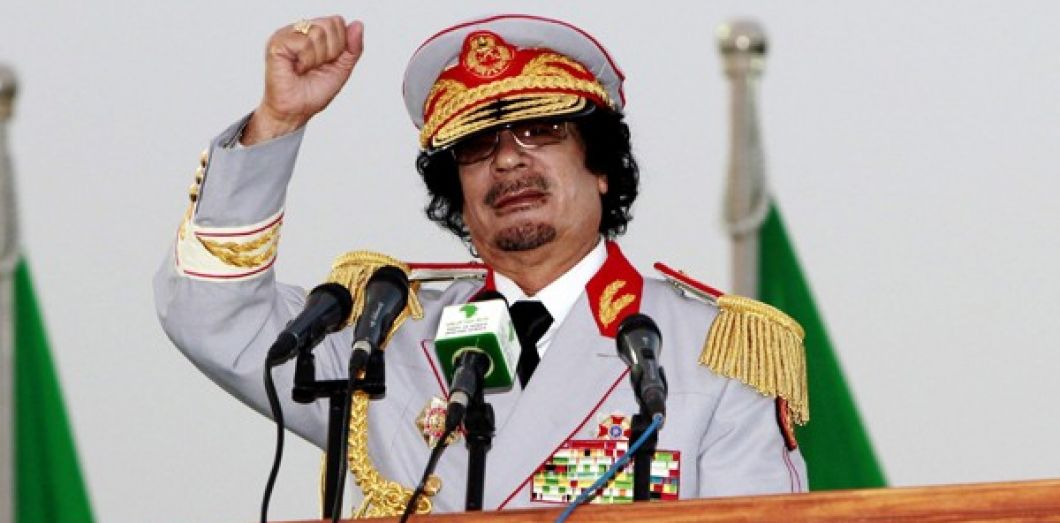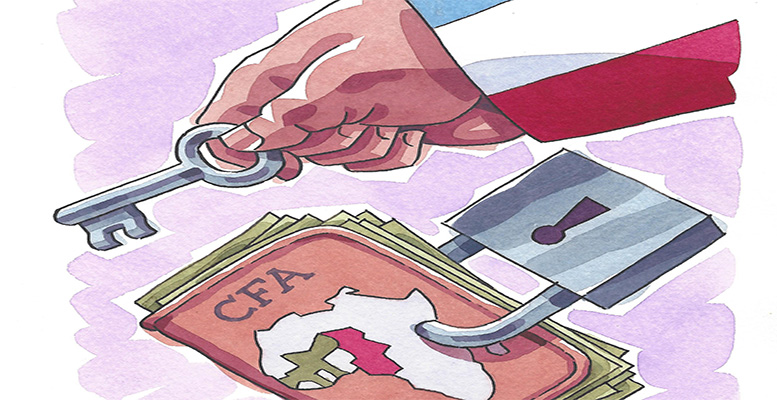Introduction
Muammar Gaddafi came to power with a coup he carried
out with his fellow soldiers. He is a figure who reigned in Libya from 1969
until his assassination and overthrow in 2011 and is known for his strong
support for Pan-Arabism and Pan-Africanism. It promoted cooperation and unity
between Arab and African nations, advocating first a united Arab world and
subsequently a united Africa. He also promoted a form of theory close to
socialism known as the "Third International Theory", which emphasized
direct democracy and decentralized control of local resources. Gaddafi's
administration; is marked by human rights violations, suppression of political
opposition, interference in the internal affairs of other countries, and
support for insurgent groups and authoritarian regimes. But the greatest memory
left of Gaddafi is that he was a leader who sacrificed his life to lay the
foundations of a strong Africa.
Gaddafi: A Leader in Pursuit
of Arab League
Gaddafi was influenced by
Gamal Abdul Nasser in Pan-Arabist thought. While still in military school,
Gaddafi followed Abdul Nasser's speeches on the radio with great admiration.
Later, he envisioned himself as the unifier of the identities of Pan-Arabism,
Pan-Africanism, and Pan-Islamism, particularly in response to Abdul Nasser's
definition of "an aimless search for a hero" to the Arab world, as
the sought-after leader of the Pan-Arabism that Abdul Nasser defined. has seen.
While Pan-Arabism is the desire of Arab countries to unite around their own
identities and common values, Pan-Islamism is the desire of all states that share
the Islamic faith to come together. The pinnacle of thought reached its peak
with the establishment of the "United Arab Republic" between 1958 and
1961, which brought together Egypt, Syria, and for a short time Yemen.
During his reign, Gaddafi
sought to strengthen ties between various Arab countries by supporting
movements such as the 1958 Iraqi revolution and the 1952 Egyptian revolution.
Gaddafi, an advocate of the struggle against imperialism and colonialism,
supported national liberation movements around the world and tried to create a
political and economic union between Arab states whose ultimate goal was to
establish the "United Arab Republic". This union would be based on a
common Arab currency, developing trade relations, promoting investment and trade,
and different joint venture and economic policies.
With the death of Abdul Nasser
in September 1970, Gaddafi tried to establish himself as the main figure of
Pan-Arabism. In April 1971, he met with the new leader of Egypt, Anouar
al-Sadat, and the Syrian leader, Hafez Assad, in Benghazi and announced the
establishment of a federation. The main ideology of the confederation is
democratic socialism, and its main goal is to support Palestine and form a
middle front against Israel. As part of the established confederation, Egypt
and Libya – but with the exception of Syria – agreed to unite completely.
However, differences emerged before unification was achieved. While Sadat
particularly preferred a gradual approach, Gaddafi wanted to move forward
quickly. Therefore, the merger project remained an unanswered
letter.
From Pan-Arabism to
Pan-Africanism: A Criticized but Functional Transition
Gaddafi defended African
nationalist movements that struggled for independence throughout his
administration. Disappointed by his Arab colleagues, Gaddafi turned his face to
Africa in the 1960s and focused his policy on "African affairs". This
transition was an important turning point in Gaddafi's life, fueled by his
desire to fight against imperialism and to spread his ideas, summarized in the
Green Book and embodied in the Jamahiriya.
From the 1970s onwards,
Jamahiriye wanted to act on behalf of two blocks as a decentralized sphere of
influence in the middle of the Cold War as the pioneer of a "neither
capitalist nor socialist" movement in Africa. Gaddafi also tried to
undermine "France", the neocolonial model implemented on the eve of
the independence of the French-speaking African states.
Many regional multilateral
meetings have witnessed the Pan-Africanist diplomatic game of Muammar Gaddafi
and his government. In this context, Gaddafi organized the Afro-Arab conference
in Cairo in March 1977, where he used all his diplomatic weight to create a
radical position that brought together sixty states and called for strengthening
the struggle against Western imperialism. At the conference, a resolution was
adopted against the regimes of South Africa and Southern Rhodesia ruled by
Israel and apartheid regimes. On this occasion, a total boycott was implemented
against these countries.
“The United States of Africa”
or “African Union”: Good News but Bad Surprise
Although the African agenda at
the beginning of the 21st century was revived by the NEPAD project, which was
largely fueled by the African Renaissance program led by Thabo Mbeki, the
biggest project from that period was the African Union (AfB) project supported
by Muammar Gaddafi. Gaddafi tried to embody large-scale projects by
demonstrating his commitment to Africa and the uniqueness of his position as a
leader calling for continental unity in Africa, especially in Nkrumah's
"United States" model. Gaddafi's large-scale project was to make the
Organization Of African Unity (OAU) more dynamic under the name of the African
Union (AfB). Although this transformation was not fully achieved as Gaddafi
wanted, it can easily be said that it was under his initiative (Mvilongo, 2013,
pp. 16-89).
Gaddafi, who came to power by
overthrowing King Idris in 1969, was then a young colonel of the Libyan army.
Inspired by the figure of Nasser, this young leader abolished the monarchy when
he came to power, then nationalized the oil companies by closing the foreign
military bases in the country. In his works “The Green Book” and “My Views”,
Gaddafi developed a hybrid political thought that combined Arab nationalism
with a double critique of Marxism and capitalism. Gaddafi, who was not content
with being the leader of Pan-Arabism in the following years, tried to connect
Pan-Africanism to the circle of anti-imperialism, anti-communism, and anti-Zionism.
After 1990, Gaddafi started to give importance to Pan-Africanism by keeping
Pan-Arabism thoughts in the background. Compared to important figures of
Pan-Africanism such as Nkrumah, Nyerere, and Sankara, Gaddafi can be said to be
more influential. This effectiveness stems from the fact that Gaddafi was able
to maintain complete control over his country's enormous natural and energy
resources and therefore had a strong financial instrument to support his
diplomacy. Gaddafi, who supported friendly regimes across Africa and financed
economic and social development projects, also supported armed rebellions and
military instability, and occasionally resorted to economic blackmail. However,
the Arabization policy of his regime towards African countries in the middle
years and the Chad-Libya war between 1978 and 1987 became indelible marks of
Gaddafi in the following years and became a serious obstacle to his
Pan-Africanist thoughts.
On September 9, 1999, on
the occasion of the thirtieth anniversary of Gaddafi's coming to power, an
extraordinary AfU meeting was held in the city of Sirte. During the summit,
Gaddafi stated that a new organization, which he called the "United States
of Africa", would be established. However, the name "United States of
Africa" was rejected as most of the leaders preferred the name
"African Union". This project, which dates back to the 1960s, became
a reality at an incredible speed during the summit meeting held in Lome, the
capital of Togo, in 2000, thanks to Gaddafi's initiatives and the funds he
invested. Believing that the will of the people should not be violated, Gaddafi
was in favor of the abolition of the borders. The AfB was formally established
during the OAU summit held in Durban, South Africa, from 8 to 10 July 2002.
Inspired by the model of the European Union, the United Nations, and the United
States, the AfB reversed Gaddafi's "United States of Africa" project
by reinforcing the power and sovereignty of existing states. The new
organization has been in line with the conservative principles of the Monrovia
Group, which has shaped the OAU's policy as De Facto since its founding.
The Central Bank of Africa and
the Common Currency: The Project That Killed Gaddafi
The idea of establishing a
single central bank and currency in Africa has its roots in the initial goals
set in the founding of the Organization of African Unity in 1963. The idea came
to the fore again in 2001 when the organization turned into the African Union.
However, this idea was most supported by Gaddafi.
The Libyan president has
endeavored to fulfill the dreams of Kwame Nkrumah and Cheikh Anta Diop. Each of
these two great thinkers has the merit of formulating intense theories on the urgency
of African unification. Unlike these two thinkers, Muammar Gaddafi went so far
as to propose the establishment of an African Monetary Union. He predicted that
the headquarters of the monetary union that would control the currency proposed
by Gaddafi would be in Yaoundé, the capital of Cameroon. For its construction
and creation, Gaddafi voluntarily donated 30 billion dollars. Gaddafi also
proposed the establishment of the African Central Bank in Abuja, Nigeria, which
will provide the regulation and management of the African currency, which will
be functional from 2014.
Conclusion
Muammar Gaddafi is a
Pan-Africanist leader who made efforts to create an economic and political
union of African countries. It has been widely criticized for its authoritarian
and oppressive regime. Its fall in 2011 was the result of a popular revolution
supported by NATO forces. Gaddafi, who initially supported Pan-Arabism, was
disappointed by his Arab colleagues and later switched to Pan-Africanism.
Despite his late transition to Pan-Africanism, Gaddafi is among the most
pragmatic Pan-Africanists. The African Common Currency and African Central Bank
project continues to be among the most ambitious projects of Pan-Africanism.




Laisser un commentaire